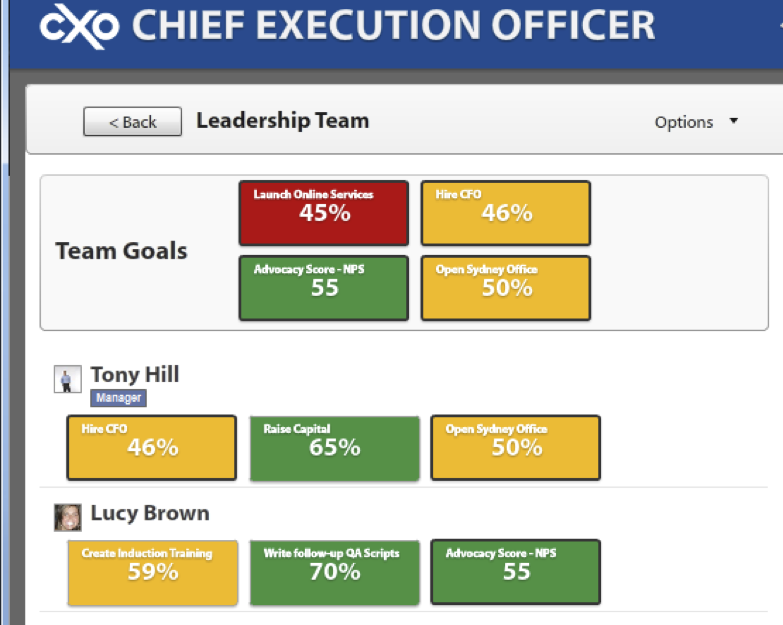It’s a common pattern: a firm’s leadership or executive team holes up for one or two full days of high-intensity strategic planning at the start of the year, resulting in a set of strategic intentions or priorities to move the company forward. The business strategy and initiatives are top of mind immediately following this event, and the commitment is high.
Then, as the days and weeks go by, that commitment and focus tend to wane. Other priorities and issues grab attention, and, before long, both leaders and employees are having trouble remembering – never mind focusing on – those strategic intentions set out so carefully at the start of the year.
We’ve seen this pattern all too often in our client work. In fact, about five years ago, we re-engineered our approach to focus as much on driving execution as on developing strategy. Similarly, many business thought-leaders are seeing the same pattern. Tom Peters writes that “execution is the missing 99%” for business success.
To avoid this pitfall, there are a number of tactics that must take place to drive the execution of any business strategy. These tactics together operationalize the strategic plan and are a crucial next step in moving strategy from planning to implementation.
Balancing Strategic and Operational Work
Paul Dinsmore, one of the founders of and early contributors to the Project Management Institute (PMI), wrote that in any business there are two kinds of work going on:
- “Operational work” – the management of the status quo.
- “Project work” – the management of change.
Think of these as the yin and yang that exist in all organizations. Operational work is about using known processes and systems, serving customers, or creating products in an established and well-understood manner. Project work, on the other hand, is being done outside these norms and, in many cases, is intended to establish the processes and systems to serve the needs of future customers or to create new products and services.
In line with Paul’s definition, project work involves activities being done on strategic priorities that are driving some sort of change in the business. Hypothetically, any company that wanted to operate the same way five or ten years from now would only perform operational work. But as we know, change is a constant, and if firms don’t change and adapt they are bound for failure. Both types of work are taking place to some extent in all organizations.
Steps to Operationalizing the Strategy
Avoiding the trap of having a strategic plan falter due to lack of attention and focus requires a set of deliberate actions. These actions, if initiated shortly after creation of the strategic priorities, will maximize the chances of successful execution:
- Communication – Leaders must take the time to communicate the strategic plan throughout the organization, top to bottom. Common approaches to this in the oil and gas industry would include multi-site forums often called “town hall” meetings, where not only are key elements of the plan presented but discussion and questions are encouraged. This can and should be supplemented by additional communications using a variety of media including company newsletters, blogs, video blogs, forums, etc., many of which new technology can support.
- Secondary and Tertiary Planning – Often, strategic planning outputs remain poorly defined following the annual strategic planning session. Further work needs to be done to flesh out both the “what” and the “how” of any particular strategic initiative. It is important to do this sequentially:
- Defining the what – sometimes called design – involves creating a clear picture of what the future state will look like. For tangible outcomes, this could take the form of blueprints, drawings, collection and processing maps, etc. For less tangible outputs, like processes, the form of output could be process maps or operating procedure documents.
- Once the design is clear, then the next step is to define the work involved in creating those deliverables – the how. This type of planning typically results in task lists with associated resources, durations, schedules, and ownership.
- Balancing Deliverables and Resources – A situation I’ve seen too often in the project management advisory work I do across many industries is the chronic imbalance between commitment to outcomes and allocation of inputs. Individuals would accept responsibility to deliver some output or deliverable without negotiating for or being given authority over the people, money, and other resources needed to create those outputs. This situation usually resulted in frustration and deliverables not occurring as expected. Leaders must ensure that, when delegating responsibility for outcomes, they also delegate authority over the necessary resources to make those outcomes happen.
- Keeping Progress Top-of-Mind – Even when strategic priorities are clearly communicated, well planned, and appropriately resourced, they can still lose attention and focus. Organizations must put in place mechanisms to highlight progress on strategic priorities and keep those as visible as operational metrics like BOEs or earnings are. Business dashboarding systems can provide this visibility, provided they give equal attention to strategic and operational measures.
- Inertia – One final consideration for leaders is that strategic plans typically involve change, and it takes less effort for employees and teams to operate within the status quo. You must “sell the vision,” explain the rationale for the change, and guide employees through the uncertainties and learning required to embrace change.
Success of a business strategy requires so much more than the annual creation of the strategic plan. Company leaders must commit themselves to the work involved in operationalizing the plan through robust communication, additional and more granular planning, smart allocation of resources, and good mechanisms to keep progress visible. All this requires effort and discipline, but the returns will be evident as the company adapts and thrives.
Caption: Business dashboards that provide information about both operational and strategic priorities are key.


